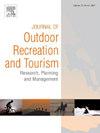Why municipalities plan for outdoor recreation: a case study from the Swedish west coast
IF 4.4
3区 管理学
Q1 HOSPITALITY, LEISURE, SPORT & TOURISM
Journal of Outdoor Recreation and Tourism-Research Planning and Management
Pub Date : 2025-10-03
DOI:10.1016/j.jort.2025.100969
引用次数: 0
Abstract
Spatial planning plays a crucial role in preserving both ecological values and areas for outdoor recreation. Historically, outdoor recreation has been central to Swedish public health planning, but research shows that its integration into spatial planning has weakened, particularly in Sweden's decentralized system. Instead, outdoor recreation is often framed as an economic asset, providing attractiveness and supporting development rather than public health.
As Swedish municipalities hold a planning monopoly, they play a key role in preserving recreational areas. This study examines how 11 municipalities on the Swedish west coast—a region facing great development, conservation, and recreation pressures—integrate outdoor recreation into their plans. A qualitative analysis of comprehensive plans, combined with a case study of a nature reserve planning process in Marstrand, reveals that the primary motivation for outdoor recreation is economic growth. Coastal municipalities aim to attract both tourists and year-round residents, whereas urban and commuting areas focus on providing attractive living environments to preserve the residential population under regional/national competition.
A key conclusion is that without formal incentives, the incorporation of outdoor recreation in spatial planning is primarily motivated by an economic rationale rather than as a public health strategy. This suggests that in decentralized systems where health planning is not mandated, outdoor recreation remains secondary to economic priorities.
为什么市政当局计划户外娱乐:来自瑞典西海岸的案例研究
空间规划在保护生态价值和户外休闲空间方面起着至关重要的作用。从历史上看,户外娱乐一直是瑞典公共卫生规划的核心,但研究表明,它与空间规划的结合已经减弱,特别是在瑞典的分散系统中。相反,户外娱乐往往被视为一种经济资产,提供吸引力和支持发展,而不是公共卫生。由于瑞典市政当局拥有规划垄断权,他们在保护休闲区方面发挥着关键作用。这项研究考察了瑞典西海岸的11个城市如何将户外娱乐融入他们的规划中,这一地区面临着巨大的发展、保护和娱乐压力。综合规划的定性分析,结合Marstrand自然保护区规划过程的案例研究,揭示了户外休闲活动的主要动机是经济增长。沿海城市的目标是吸引游客和全年居民,而城市和通勤区则专注于提供有吸引力的生活环境,以在区域/国家竞争下保护居住人口。一个关键的结论是,如果没有正式的激励措施,将户外娱乐纳入空间规划主要是出于经济原因,而不是作为一种公共卫生战略。这表明,在没有强制性卫生规划的分散系统中,户外娱乐仍然次于经济优先事项。
本文章由计算机程序翻译,如有差异,请以英文原文为准。
求助全文
约1分钟内获得全文
求助全文
来源期刊

Journal of Outdoor Recreation and Tourism-Research Planning and Management
HOSPITALITY, LEISURE, SPORT & TOURISM-
CiteScore
6.70
自引率
5.30%
发文量
84
期刊介绍:
Journal of Outdoor Recreation and Tourism offers a dedicated outlet for research relevant to social sciences and natural resources. The journal publishes peer reviewed original research on all aspects of outdoor recreation planning and management, covering the entire spectrum of settings from wilderness to urban outdoor recreation opportunities. It also focuses on new products and findings in nature based tourism and park management. JORT is an interdisciplinary and transdisciplinary journal, articles may focus on any aspect of theory, method, or concept of outdoor recreation research, planning or management, and interdisciplinary work is especially welcome, and may be of a theoretical and/or a case study nature. Depending on the topic of investigation, articles may be positioned within one academic discipline, or draw from several disciplines in an integrative manner, with overarching relevance to social sciences and natural resources. JORT is international in scope and attracts scholars from all reaches of the world to facilitate the exchange of ideas. As such, the journal enhances understanding of scientific knowledge, empirical results, and practitioners'' needs. Therefore in JORT each article is accompanied by an executive summary, written by the editors or authors, highlighting the planning and management relevant aspects of the article.
 求助内容:
求助内容: 应助结果提醒方式:
应助结果提醒方式:


